Search Images
Browse Content (p. 1719)
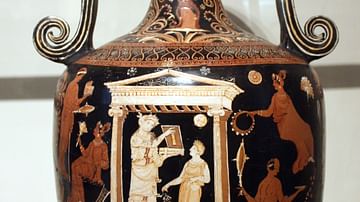
Image
Apulian Loutrophoros
A red-figure loutrophoros from Apulia, 4th century BCE. These tall slim vessels with elongated handles were used during wedding and funeral rites and as grave markers, especially for those who died unmarried. This example depicts women and...
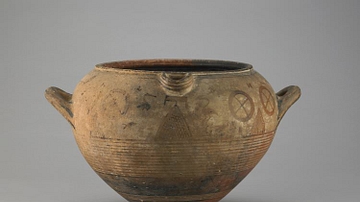
Image
Attic Louterion
An Attic louterion vessel, used for pouring water, wine or in funeral rites and usually wiith a central spout as in this example, 760-735 BCE. (British Museum, London).
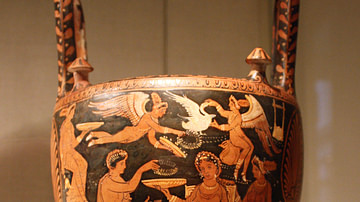
Image
Lebes Gamikos
A southern Italian lebes gamikos vessel, c. 340-320 BCE. Lebetes gamikoi are distinguished by their high handles and they were associated with wedding and funeral rituals. On this example a lady perhaps prepares for a wedding or festival...
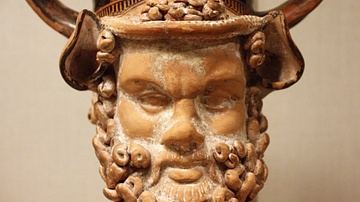
Image
Satyr Kantharos
An Attic kantharos (drinking cup) with a head of a satyr, c. 420 BCE.
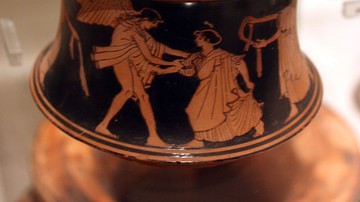
Image
Attic Pyxis
A red-figure Attic pyxis, 460-450 BCE. Pyxides were lidded boxes used for storing small items such as jewellery. This example depicts the birth of Aphrodite with Eros on the left. (Metropolitan -museum of Art, New York).
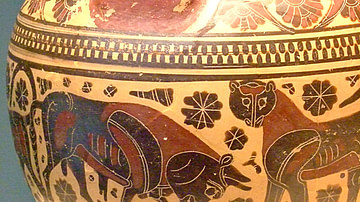
Image
Corinthian Vessel with Protome
A Corinthian vessel depicting animals and carrying a protome of a female head on the handle, c. 570 BCE. (Getty Villa, Malibu).
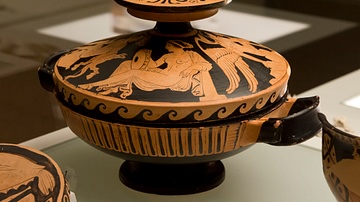
Image
Attic Lekanis
A red-figure Attic Lekanis, 400-300 BCE. (Provenance: Spina Necropolis). Lekanides were often used for serving food where the lid could be overturned and its handle became a foot. The woman depicted here holds a tympanon or drum.
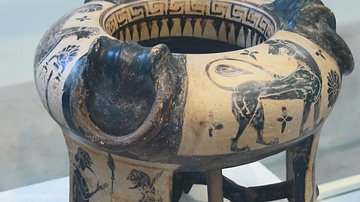
Image
Boeotian Exaleiptron
A Boeotian tripod exaleiptron (also known as a kothon), mid-6th century BCE. These vessels were used for keeping fine oils and perfumes and had an inverted lip to reduce spillage.
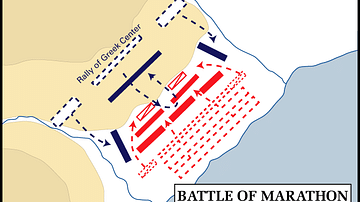
Image
Battle of Marathon, 490 BCE
A map illustrating the position of Greek (blue) and Persian (red) forces at the Battle of Marathon in 490 BCE. The allied Greek city-states led by Athens would win the battle and repel the invasion of Greece by Persian King Darius.

Image
Spartan Warriors
This is a 3d representation of how Spartan warriors in action might have looked. Armoured warriors equipped with shield and spear, known as Hoplites, were typical of ancient Greek warfare.